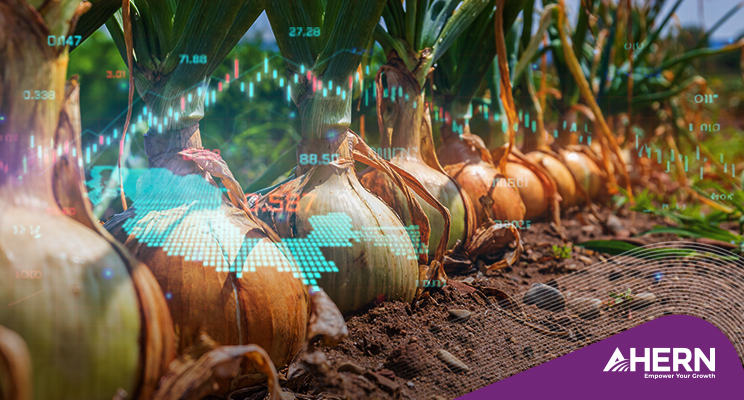
In September, we celebrate our roots. And we are not only talking about history or culture, but also about those roots that are cultivated in the fields and feed millions: the ones that grow from the earth and sustain our economy.
Among them, the onion occupies a prominent place. It is one of the most important crops in the country, both for its presence in Mexican cuisine and for its weight in international agricultural trade.
Currently, Mexico positions itself as one of the main players in the global onion trade. According to data from UN Comtrade and Tridge, between 2019 and 2023 the value of Mexican fresh onion exports grew by 28.2%, increasing from 349.5 million to 448.2 million dollars.
This has placed our country as the fourth-largest exporter in the world, with 8.87% of the global value. Between May 2024 and April 2025 alone, more than 1,150 international shipments of Mexican onions have been recorded, with the United States, Belize, and Spain as the main destinations.
These figures not only reflect competitiveness but also international confidence in the quality of what is grown in Mexico. Mexican onions not only feed households within the country, but are also served on tables around the world.
However, behind every figure, there is a reality of the fields that cannot be ignored. Onion cultivation faces technical and climatic challenges that test producers year after year.
Prolonged drought has been one of the main obstacles in regions of the southern part of the country, causing reductions of up to 50% in the planted area, according to recent reports. Additionally, the lack of water has encouraged the presence of hard-to-control pests, further complicating crop management.
In states like Tamaulipas, producers also report significant losses due to the combination of drought and insect infestations. On top of this, onion is a crop particularly sensitive to water stress: it requires between 350 and 550 mm of water throughout its entire cycle, with frequent and well-distributed irrigation.
On the other hand, diseases such as white rot, fusarium, anthracnose, and purple blotch remain constant threats, requiring rigorous technical management, from seed selection to the end of harvest.
At Ahern, we know that these challenges do not stop Mexican agriculture. On the contrary, they strengthen it. That’s why we work closely with farmers, supporting them with high-yield genetics and technical solutions that allow them to face these conditions with greater confidence and productivity.
This patriotic month is not only an opportunity to remember what we were, but also to recognize what we continue to be: a country that cultivates with pride, effort, and a vision for the future.
And in every onion that is harvested, packed, and exported, there is also the work of hundreds of families, the technical knowledge of generations, and the flavor of a land that never gives up.
Because in Mexico, the countryside is also heritage.
Sources: Tridge – Exportación cebolla México 2025 , Volza – Embarques de cebolla desde México (2024–2025), Aderezo.mx – Impacto de la sequía en zonas productoras, Haifa Group – Requerimientos hídricos de la cebolla.